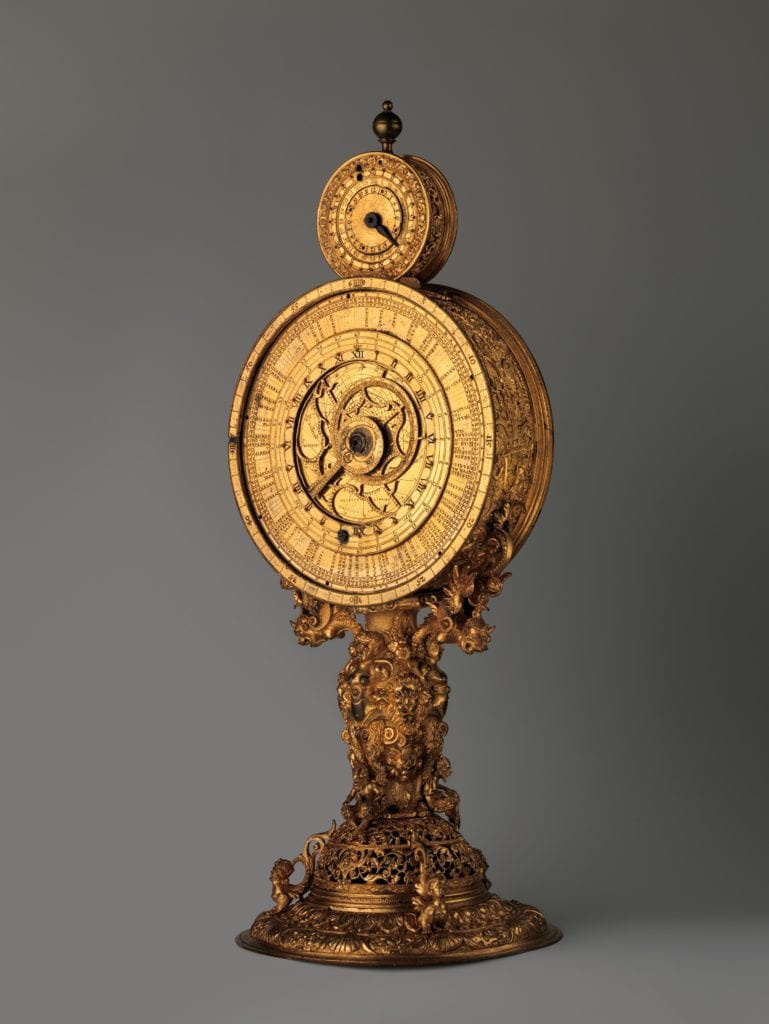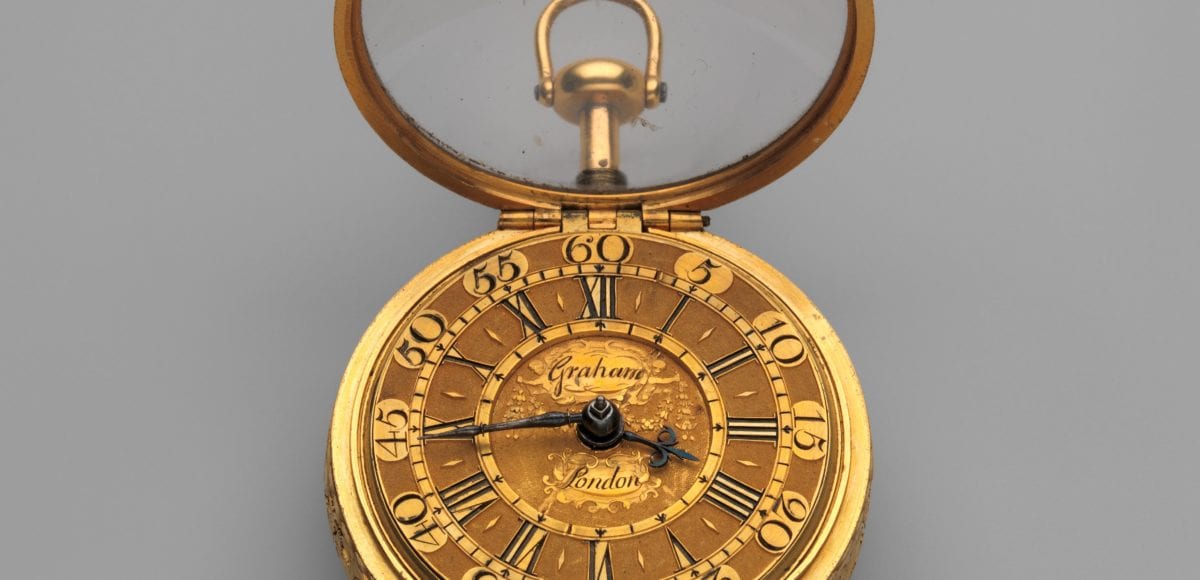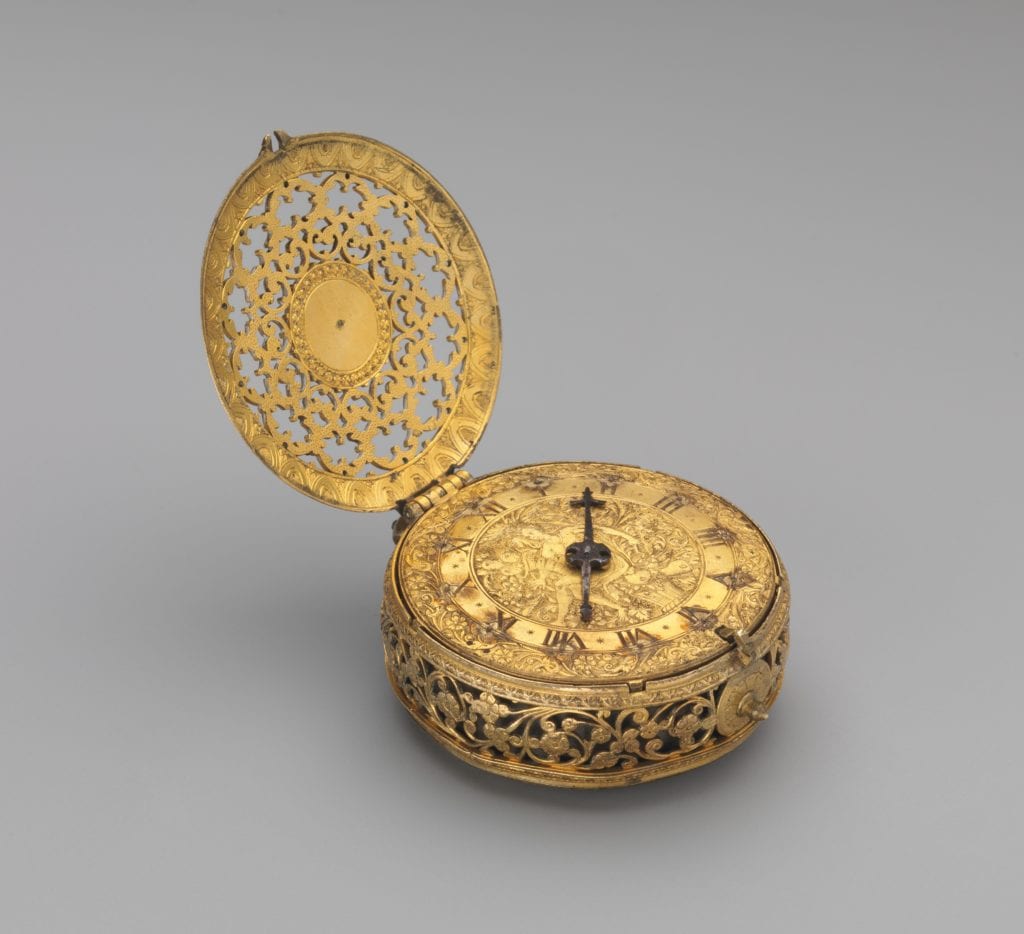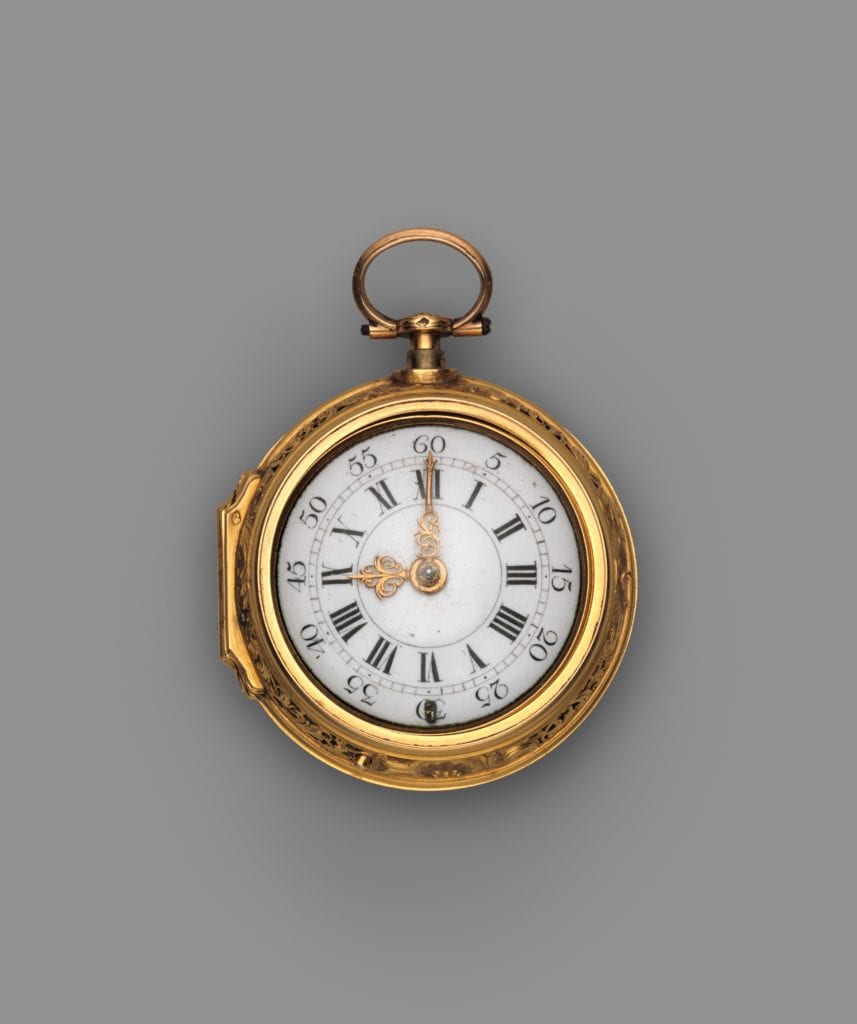For those of you who don’t live in New York City, the Metropolitan Museum of Art recently exhibited a collection of antique clocks and watches titled The Luxury of Time: European Clocks and Watches. Don’t worry if you missed it; we had one of our correspondents visit on our behalf. Below is a summary of her experience.
It’s hard to imagine a period when only the prominent and wealthy members of society had access to timekeeping devices. Today, we often take the ability to measure time for granted. Timepieces serve a different role in our lives. Wearing a particular watch on your wrist is not just a means to effortlessly keep time as you travel the globe. It’s a way of showing that you’ve achieved a certain status in your life or in your career.
Watches and clocks have always been more than just devices that tell time. They are works of art that have been infused with meaning and value that far surpasses their functionality.
The Luxury of Time: European Clocks and Watches exhibition at the Metropolitan Museum of Art explores this everlasting fascination with watches and clocks. As part of the iconic “Sundays at the Met” series, Hodinkee’s Managing Editor Jack Forster and Cambridge’s principal scientist of Social Shaping Research Richard H.R. Harper sat down to discuss the exhibit in a lecture titled Making Time: Clocks and Watches.
 The pair first explored the idea of accuracy, starting with the Mirror Clock, circa 1570. The Mirror Clock is an example of an elaborate astronomical timepiece, but it likely measured time only as accurately as +/- half an hour to an hour per day. Even though this timekeeping device was not accurate, it was important because it gave hope to the notion that the future could be mapped and measured.
The pair first explored the idea of accuracy, starting with the Mirror Clock, circa 1570. The Mirror Clock is an example of an elaborate astronomical timepiece, but it likely measured time only as accurately as +/- half an hour to an hour per day. Even though this timekeeping device was not accurate, it was important because it gave hope to the notion that the future could be mapped and measured.
Just a few decades later, the accuracy of timekeeping devices improved slightly with pieces like the Clock Watch. Still, this timepiece had no minute hand and would not be considered accurate by modern standards. Like the Mirror Clock, the Clock Watch was an object of importance because it showed your guests that you were intelligent enough to understand the concept and measurement of time. Ultimately, the focus of timekeeping devices in the late sixteenth and early seventeenth centuries was less on functionality and technical excellence and more on appearance and the sheer ability to display measured time.
Next, Forster and Harper discussed the notable innovations and shifting roles of timekeeping devices over time. By the Industrial Revolution, timekeeping had come to the middle class. For this group, time became associated with ordinary tasks, like clocking in and out of work. One of the Mantel Clocks from this time period exemplifies the attempt to make the disciplined life more beautiful and create a way to marvel at the now mundane.
Another innovation they explored was the fusion of fashion and function as timepieces became portable. In order for a pocket watch to be stylish enough for the modern businessman, it needed to be flat enough to seamlessly fit into a suit pocket. This required that the inner workings be more compact than in previous timekeeping devices. To reduce friction in this condensed environment, watchmakers began to use gemstones in the mechanisms of pocket watches, like the Pair-Case Repeating Watch from the eighteenth century.
The rise of pocket watches over clocks represented a notable shift in the role of timekeeping, according to Forster and Harper. It marked a period when time was evolving into less and less of a luxury reserved for the elite. Time was becoming accessible to everyone. As timepieces became smaller and more portable, they were no longer displayed and celebrated as they had been in centuries prior. The focus of watchmaking was more on the functionality than the aesthetics. Ultimately, the genius of the technology began to diminish the awe and wonder with which people looked at time. On a broader level, the evolution of timepieces demonstrates how we as a society are altered as we alter our technology.
The discussion closed with a Question and Answer portion. At this time, it was only appropriate that in light of the name of the lecture, Making Time: Clocks and Watches, the pair were asked the obvious question: What does making time mean to you? They discussed the answer by reminding us that time has meant different things to different people in history. The role of time in the late sixteenth and early seventeenth centuries was to give the elite a sense of god-like power at the thought of measuring or controlling time. Now, over five hundred years later, we tend to take time for granted. Time is rarely displayed or celebrated. To the average man, time is no longer exciting. Time is now something we can never get enough of. We always want more time, and we can’t see a future tamed by time technology.
For more information on the pieces discussed in this article, be sure to check out the book European Clocks and Watches in The Metropolitan Museum of Art, written by Clare Vincent, Associate Curator of the Metropolitan Museum’s Department of European Sculpture and Decorative Arts, and Jan Hendrik Leopold, with contributions from Elizabeth Sullivan, Associate Research Curator of the Metropolitan Museum’s Department of European Sculpture and Decorative Arts.
Images ©: Header, 1-4; www.metmuseum.org.
Get More Articles Like This in Your Inbox
We're constantly creating great content like this. So, why not get it delivered directly to your inbox? By subscribing you agree to our Privacy Policy but you can unsubscribe at any time.









